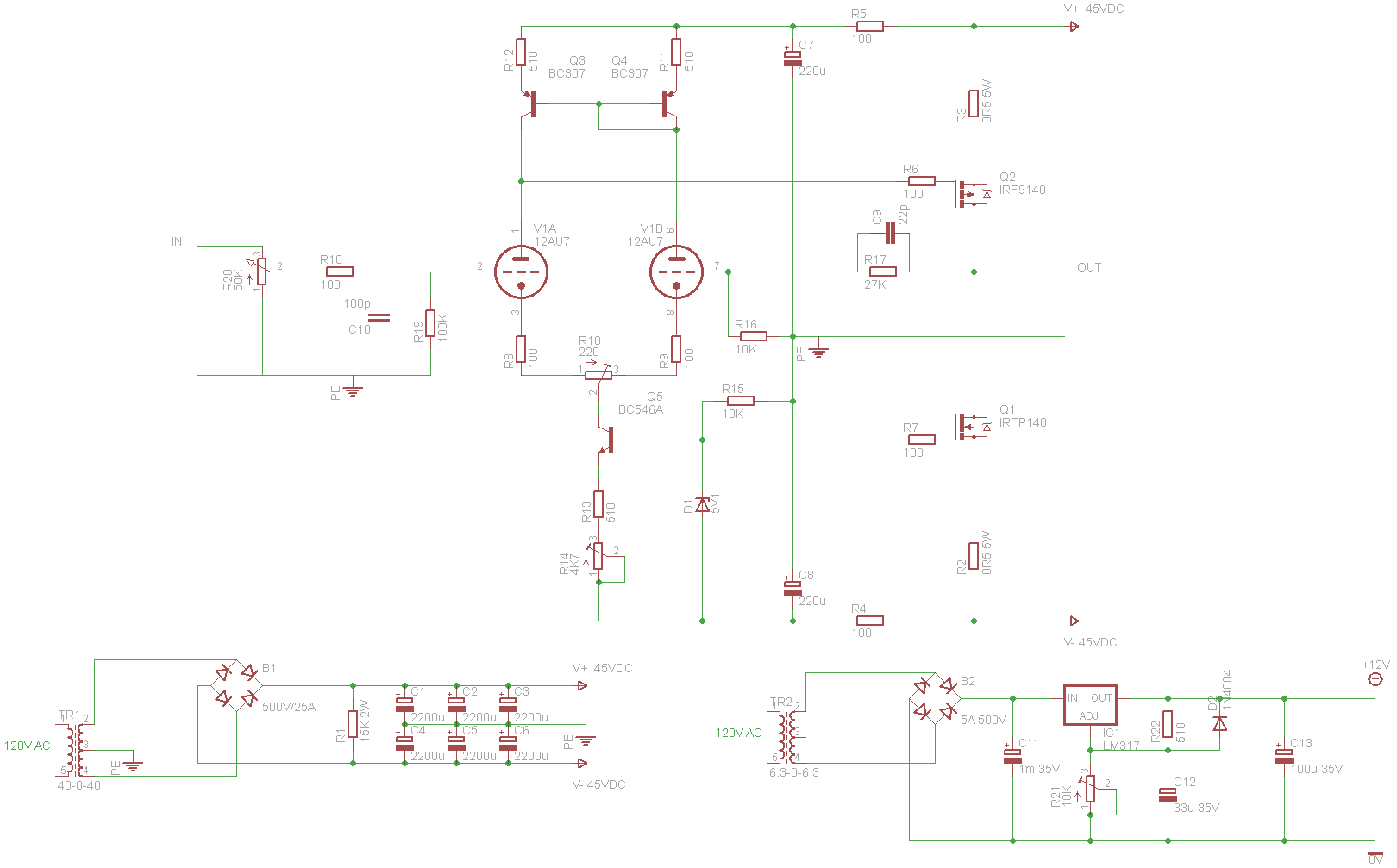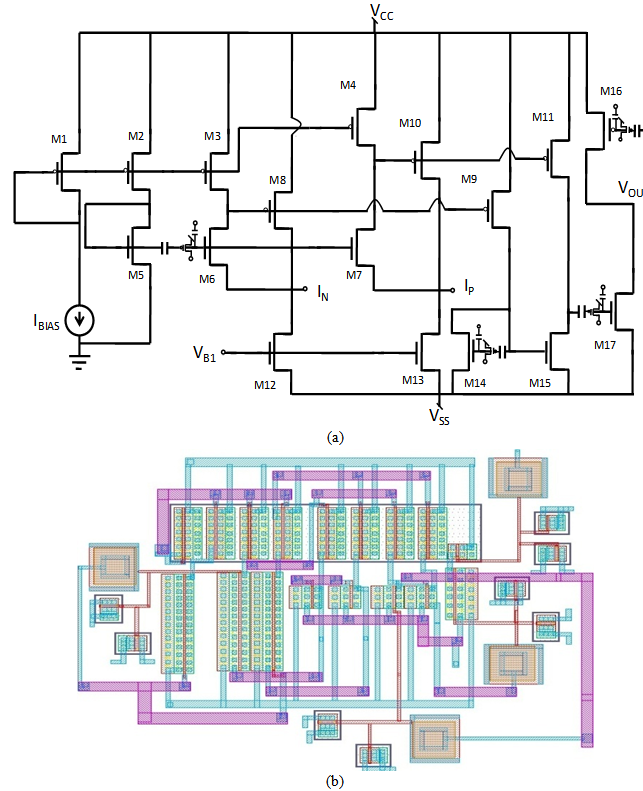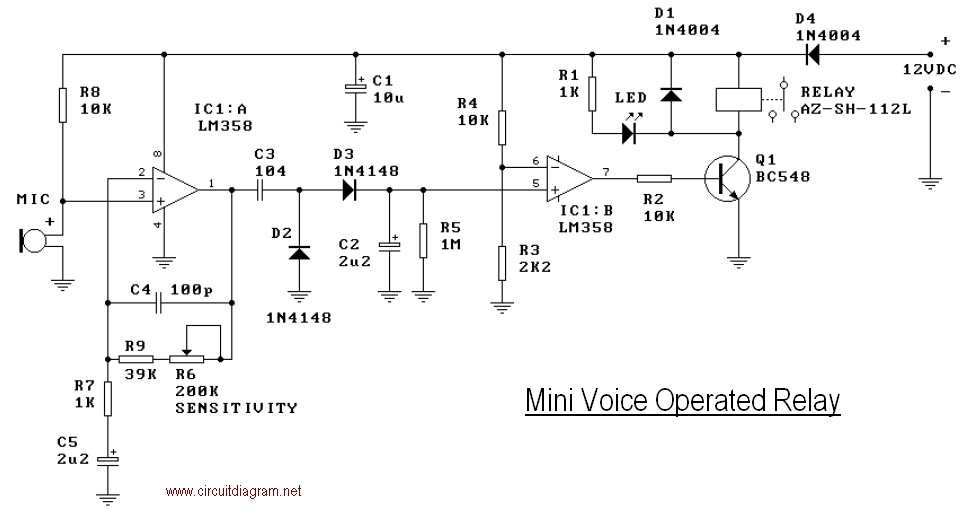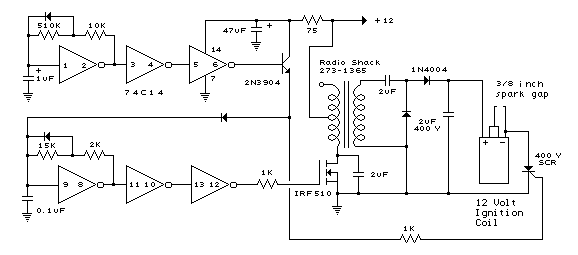
MOSFET Toggle Relay

This circuit is similar to the one above, but uses a N channel mosfet such as IRF530, 540, 640, etc. in place of the NPN transistor. Smaller mosfets could be used, but I don't know the part numbers. I tested the circuit with a IRF640, IRFZ44, IRFZ34 and REP50N06. The circuit has the same three advantages, it requires only a few parts, always comes up with the relay deactivated, and doesn't need any switch debouncing. In operation, when the relay is deactivated, the 100uF capacitor will charge to 6 volts. When the button is pressed, the capacitor will apply 6 volts to the MOSFET gate turning it on. The capacitor voltage (and gate voltage) will fall from 6 to 3 volts in about 200 mS which should be enough time for the relay contacts to move. For very slow relays, a larger capacitor may be needed. When the relay energizes, the contacts will apply 12 volts to the 3.3K resistor producing 6 volts at the gate, which will keep the relay energized indefinitely. The capacitor will now discharge to zero since the +12 relay contact is no longer connected to the 15K resistor. When the button is again pressed, the capacitor will apply zero volts to the gate turning off the relay. There should be no problem holding down the button causing the relay to re-engage since the gate voltage will be only about 1.8 volts when the button is held down and the mosfet requires about 3.5 volts or more to start conducting. But you do need to wait about 1 second or longer between button presses, so the capacitor has time to charge or discharge. Two push buttons are shown, but you could have several more in parallel to control the relay from several different locations.
This circuit employs an N-channel MOSFET, such as the IRF530, IRF540, or IRF640, as a switch to control a relay. The circuit's design offers simplicity, requiring only a minimal number of components, and ensures that the relay is initially in a deactivated state. The absence of switch debouncing is a notable advantage, enhancing reliability during operation.
When the relay is in the deactivated state, a 100 µF capacitor charges to 6 volts. The charging process occurs once the button is pressed, allowing the capacitor to apply this voltage to the gate of the MOSFET. This action activates the MOSFET, leading to a rapid drop in gate voltage from 6 volts to approximately 3 volts over a span of about 200 milliseconds. This time frame is sufficient for the relay contacts to engage. In scenarios involving slower relays, it may be necessary to increase the capacitance to ensure reliable operation.
Upon energizing the relay, the relay contacts apply 12 volts across a 3.3 kΩ resistor, which maintains the gate voltage at 6 volts, thereby keeping the MOSFET in an 'on' state indefinitely. The capacitor discharges to zero volts once the relay contact is disconnected from the 15 kΩ resistor, effectively removing the voltage from the MOSFET gate.
To deactivate the relay, the button must be pressed again, resulting in the capacitor applying zero volts to the MOSFET gate, which turns the relay off. It is important to note that pressing the button continuously will not inadvertently re-engage the relay, as the gate voltage will stabilize at approximately 1.8 volts, insufficient for the MOSFET to conduct, which typically requires around 3.5 volts. A waiting period of at least one second between button presses is advisable to allow the capacitor adequate time to charge or discharge.
The circuit design accommodates multiple push buttons connected in parallel, enabling control of the relay from various locations, thus enhancing its versatility and usability in practical applications.This circuit is similar to the one above, but uses a N channel mosfet such as IRF530, 540, 640, etc. in place of the NPN transistor. Smaller mosfets could be used, but I don't know the part numbers. I tested the circuit with a IRF640, IRFZ44, IRFZ34 and REP50N06. The circuit has the same three advantages, it requires only a few parts, always comes up with the relay deactivated, and doesn't need any switch debouncing. In operation, when the relay is deactivated, the 100uF capacitor will charge to 6 volts. When the button is pressed, the capacitor will apply 6 volts to the MOSFET gate turning it on. The capacitor voltage (and gate voltage) will fall from 6 to 3 volts in about 200 mS which should be enough time for the relay contacts to move. For very slow relays, a larger capacitor may be needed. When the relay energizes, the contacts will apply 12 volts to the 3.3K resistor producing 6 volts at the gate, which will keep the relay energized indefinetly.
The capacitor will now discharge to zero since the +12 relay contact is no longer connected to the 15K resistor. When the button is again pressed, the capacitor will apply zero volts to the gate turning off the relay.
There should be no problem holding down the button causing the relay to re-engage since the gate voltage will be only about 1.8 volts when the button is held down and the mosfet requires about 3.5 volts or more to start conducting. But you do need to wait about 1 second or longer between button presses, so the capacitor has time to charge or discharge.
Two push buttons are shown, but you could have several more in parallel to control the relay from several different locations. 🔗 External reference
This circuit employs an N-channel MOSFET, such as the IRF530, IRF540, or IRF640, as a switch to control a relay. The circuit's design offers simplicity, requiring only a minimal number of components, and ensures that the relay is initially in a deactivated state. The absence of switch debouncing is a notable advantage, enhancing reliability during operation.
When the relay is in the deactivated state, a 100 µF capacitor charges to 6 volts. The charging process occurs once the button is pressed, allowing the capacitor to apply this voltage to the gate of the MOSFET. This action activates the MOSFET, leading to a rapid drop in gate voltage from 6 volts to approximately 3 volts over a span of about 200 milliseconds. This time frame is sufficient for the relay contacts to engage. In scenarios involving slower relays, it may be necessary to increase the capacitance to ensure reliable operation.
Upon energizing the relay, the relay contacts apply 12 volts across a 3.3 kΩ resistor, which maintains the gate voltage at 6 volts, thereby keeping the MOSFET in an 'on' state indefinitely. The capacitor discharges to zero volts once the relay contact is disconnected from the 15 kΩ resistor, effectively removing the voltage from the MOSFET gate.
To deactivate the relay, the button must be pressed again, resulting in the capacitor applying zero volts to the MOSFET gate, which turns the relay off. It is important to note that pressing the button continuously will not inadvertently re-engage the relay, as the gate voltage will stabilize at approximately 1.8 volts, insufficient for the MOSFET to conduct, which typically requires around 3.5 volts. A waiting period of at least one second between button presses is advisable to allow the capacitor adequate time to charge or discharge.
The circuit design accommodates multiple push buttons connected in parallel, enabling control of the relay from various locations, thus enhancing its versatility and usability in practical applications.This circuit is similar to the one above, but uses a N channel mosfet such as IRF530, 540, 640, etc. in place of the NPN transistor. Smaller mosfets could be used, but I don't know the part numbers. I tested the circuit with a IRF640, IRFZ44, IRFZ34 and REP50N06. The circuit has the same three advantages, it requires only a few parts, always comes up with the relay deactivated, and doesn't need any switch debouncing. In operation, when the relay is deactivated, the 100uF capacitor will charge to 6 volts. When the button is pressed, the capacitor will apply 6 volts to the MOSFET gate turning it on. The capacitor voltage (and gate voltage) will fall from 6 to 3 volts in about 200 mS which should be enough time for the relay contacts to move. For very slow relays, a larger capacitor may be needed. When the relay energizes, the contacts will apply 12 volts to the 3.3K resistor producing 6 volts at the gate, which will keep the relay energized indefinetly.
The capacitor will now discharge to zero since the +12 relay contact is no longer connected to the 15K resistor. When the button is again pressed, the capacitor will apply zero volts to the gate turning off the relay.
There should be no problem holding down the button causing the relay to re-engage since the gate voltage will be only about 1.8 volts when the button is held down and the mosfet requires about 3.5 volts or more to start conducting. But you do need to wait about 1 second or longer between button presses, so the capacitor has time to charge or discharge.
Two push buttons are shown, but you could have several more in parallel to control the relay from several different locations. 🔗 External reference





